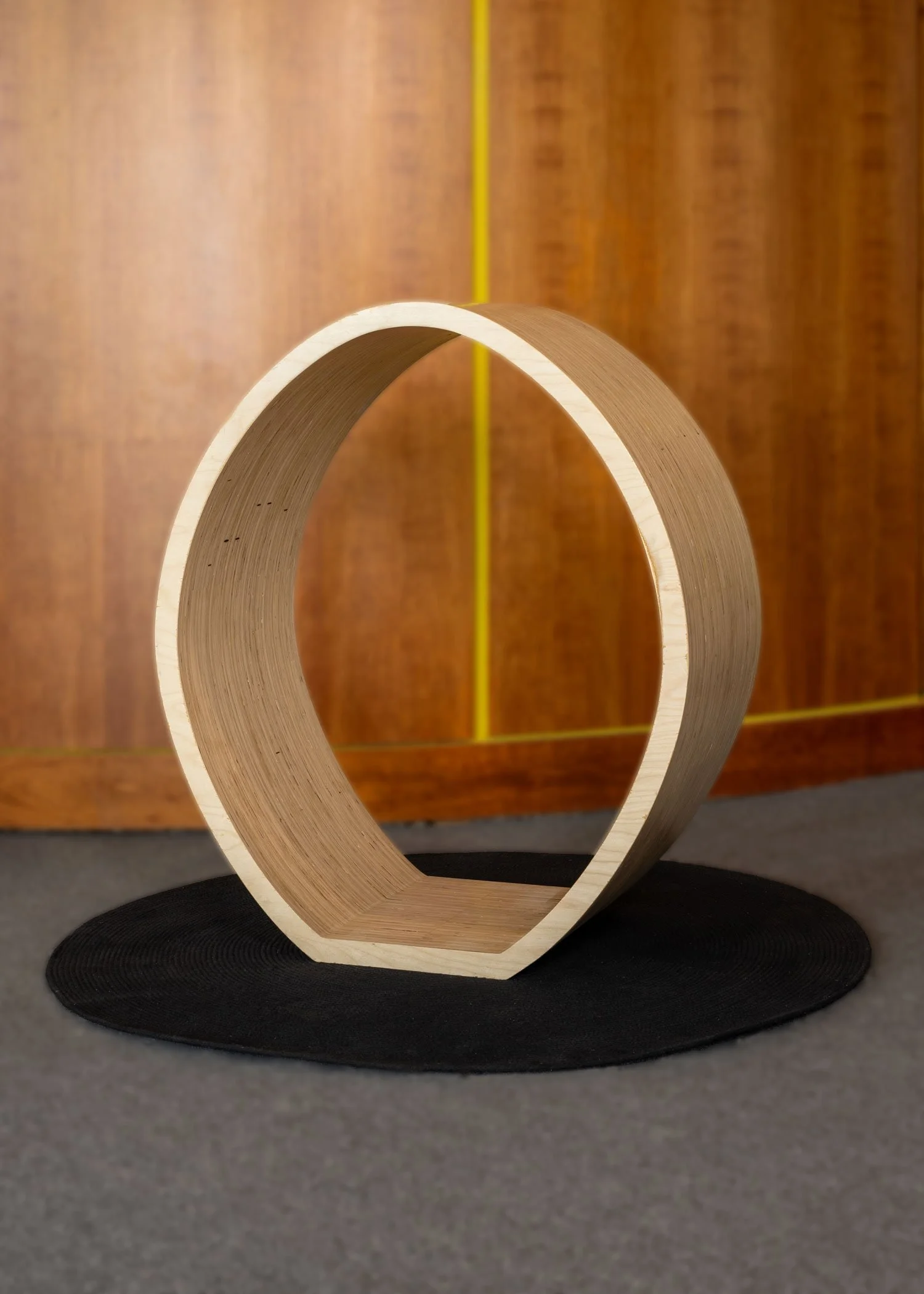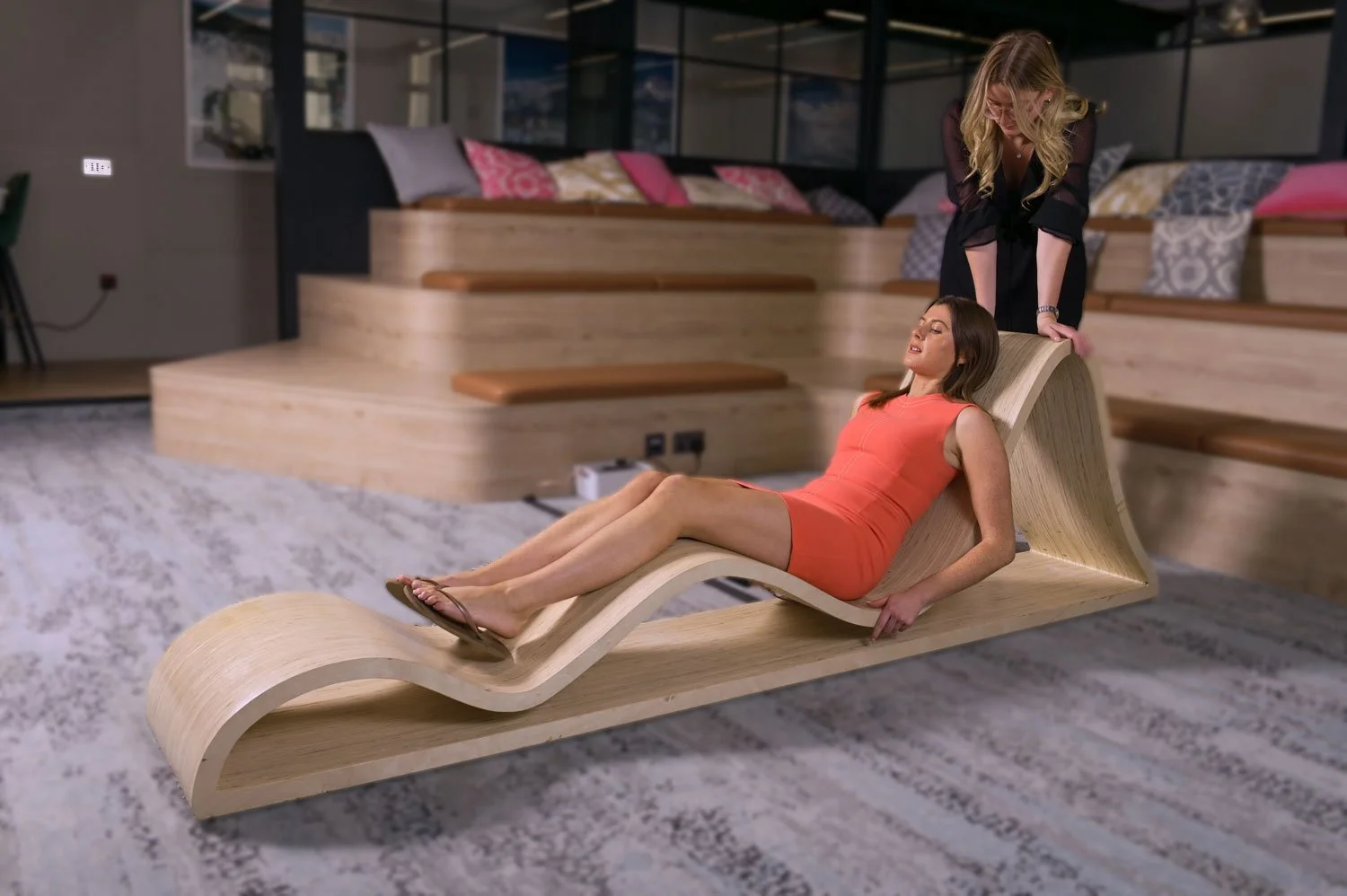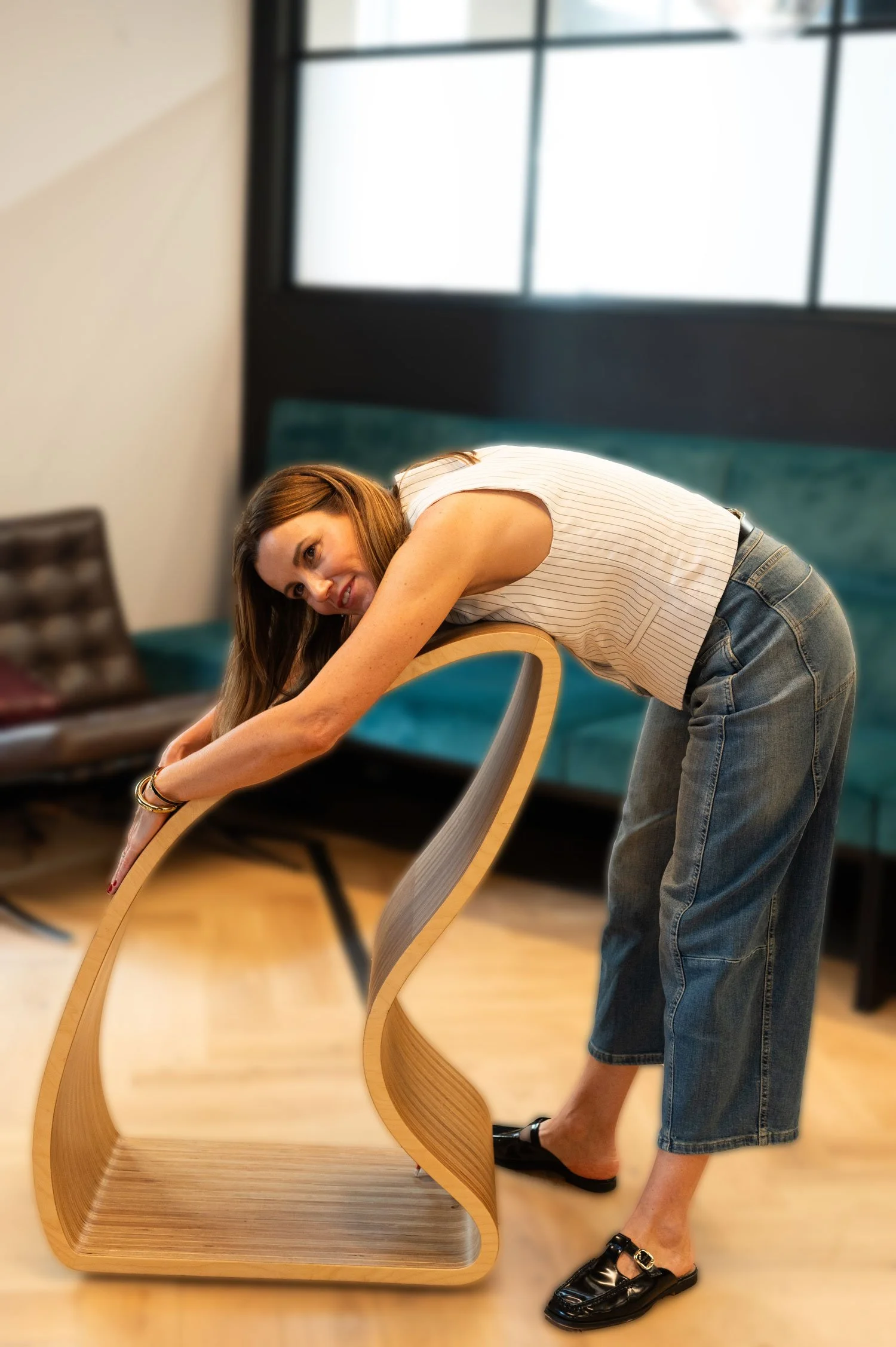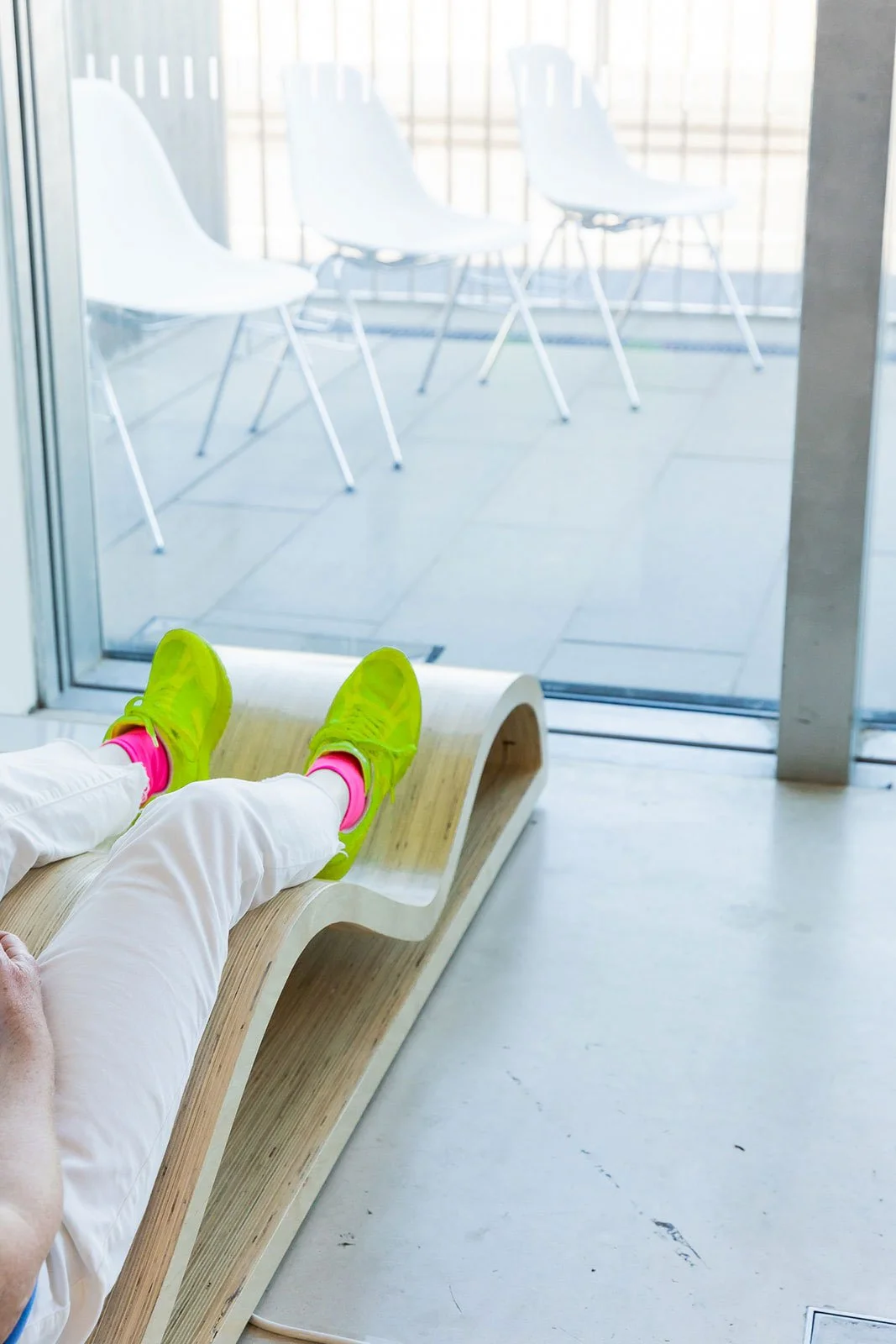FAQ
-
Sonaforms offer a physical sensory-based alternative to digital wellness tools. In workspaces, they help reduce stress and foster calm through vibroacoustic technology, turning sound into a touch-based experience—ideal for open-plan offices, relaxation pods, and quiet zones.
-
In museums and cultural spaces, Sonaforms offer immersive, screen-free engagement. Visitors can lean, rest, or climb into the sculptures and experience audio stories or soundscapes through touch, making them ideal for science galleries, children’s museums, and inclusive learning environments.
-
Yes - children love them! Imagine furniture with no sharp edge is claimable and has hidden sounds embedded in it?
They’re perfect for supporting different learning styles and offer a calming, engaging experience for all ages. They also promote sensory exploration and help develop motor skills and spatial awareness.
Technology & Design
-
Sonaforms are embedded with advanced vibration technology that turn sound into a physical sensation. Instead of hearing through speakers, users feel sound through direct contact with the wooden forms.
-
Yes - as easy as sitting down!! You can walk up and simply sit, lie, lean on, or touch the furniture, and it gently vibrates and plays sound through your body - it’s that simple. Think of it like listening through touch as well as your ears, like hugging a pet!
-
Yes! The experience can be generic or extremely personal, imagine being able to feel the heartbeat of your children or loved ones through a Sonaform, re-connecting with them in times of need. These micro-recalibration moments remind us of what’s important, fun, or relaxing when we’re stressed or disconnected.
-
Sonaforms are screen-free, intuitive, communal or used solo. Unlike headphones, they create ambient zones of calm–inviting people to physically engage with sound and encouraging natural decompression without isolation.
About Sonaforms
Applications
-
Sonaforms are designed specifically to provide positive wellness experiences by communicating sound through structure, rather than speakers or headphones. This beautiful, tactile wooden furniture emits audio through vibration, allowing you to feel sound through your body instead of just hearing it through the ears.
-
Sonaforms can help reduce stress in the workspace, spark creativity, take a break or simply allow you to enjoy sound in a completely new way. They help you connect with your calm centre, and recharge through sound and touch.
-
Sonaforms can help you feel calm, grounded, and connected. The gentle vibrations and soothing sounds allow you to re-energise, relax, and recalibrate.
For example, Sonaforms can be set up so that the vibration experience evokes feelings of lying in a peaceful meadow or calming forest canopy. You could also feel your family's heartbeats, or conversely, the sound of an eight-stroke engine – the options are limitless.
-
Unlike traditional speakers or headphones, Sonaforms transmit sound via tactile vibration. Each form is crafted using body-informed design and embedded with data-driven soundscapes, turning sound into a physical, emotionally resonant experience.
-
Designers, DEI directors, HR teams, architects, event curators, and anyone creating environments to improve creativity, or wellbeing. Previous customers include office designers, company wellbeing leads, TED Conferences, galleries such as Modern Art Oxford, creative agencies and more!
-
Sonaforms are currently made to order. We strongly encourage you to book a call with us so we can arrange a demo for you to experience them in person. We need at least ten weeks to design, fabricate and prep your order for shipment.
Workplace Wellbeing
-
Sonaforms address the rising issues of stress, distraction, and burnout in open-plan offices. They offer tactile, sound-based sculptural furniture that promote calm and focus.
-
Open-plan offices are often noisy and overstimulating. Research shows they can reduce productivity of workers by up to two-thirds, and cost US businesses an estimated 2 trillion dollars annually. All due to distraction, stress, and high staff turnover.
-
Sonaforms support neuroinclusivity by offering a sensory-rich, non-verbal, and screen-free way to decompress and regulate.
Their calming, tactile nature makes them especially beneficial for neurodivergent individuals who may be more sensitive to overstimulation in open-plan offices.
By providing a quiet, touch-based alternative to digital tools, Sonaforms accommodate a wider range of sensory and cognitive needs—helping create more inclusive, supportive environments for everyone.
-
By offering restorative moments throughout the workday, Sonaforms help employees decompress, refocus, and recharge. This leads to improved concentration, reduced stress, and better overall job satisfaction.
-
Demonstrations are available now. To arrange a demo or learn more, contact studio@shapedsound.com

Who uses Sonaforms?
Architects, office designers, curators, creative agencies and anyone interested in innovative approaches to sound, wellness, and design are encouraged to explore how Sonaforms can enhance their environment.
Origins
-
ShapedSound is an art and design studio that produces elegant sonic furniture - Sonaforms. It was founded by Dr Julie Freeman to transform how people experience sound in everyday environments.
-
Sonaforms were created by Dr Julie Freeman, a neurodivergent artist and technologist known for blending art with data and science. Julie is a TED Fellow and world renowned pioneer in the use of Data as an art form. she’s dedicated her life to understanding the complex yet subtle connection between nature and our human interaction with it. Her body of work as an artist can be found here: translatingnature.org
-
Julie Freeman’s early Sonaforms were shaped from her own body’s curves. The forms were developed during the pandemic as a response to the need for personal, tactile experiences that promote reconnection and emotional wellbeing.







